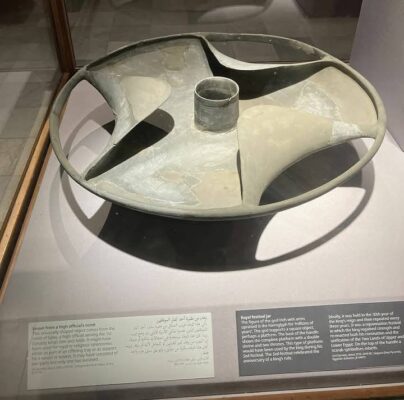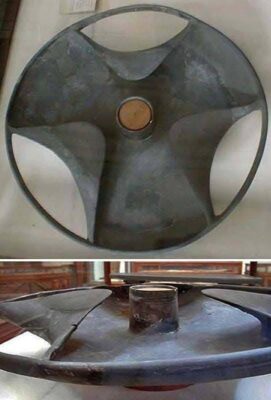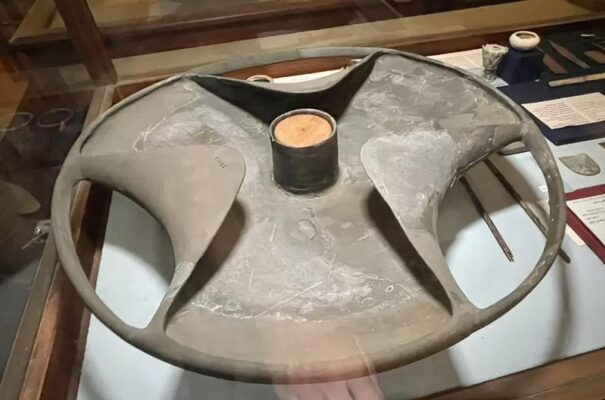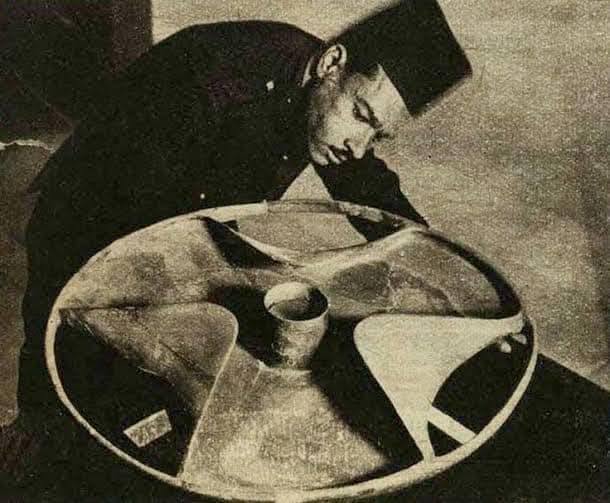The Sabu Disc, an intriguing archaeological object from the early days of ancient Egyptian history, continues to captivate scholars and historians alike. Discovered in 1936, this carefully crafted natural stone vessel has remained a subject of mystery. Its purpose and meaning are still debated, despite the wealth of knowledge we have about ancient Egypt. This article delves into the discovery, significance, and ongoing mysteries surrounding the Sabu Disc. Follow archeology.dulichvn.net to learn more about mysterious artifacts.

Discovery of the Sabu Disc
Unearthing the Sabu Disc in Saqqara’s Northern Necropolis
In 1936, a remarkable archaeological discovery was made in the northern necropolis of Saqqara, one of Egypt’s most significant burial sites. During excavations at mastaba S3111, archaeologists unearthed the Sabu Disc, a mysterious object that has puzzled scholars ever since. The tomb, which belonged to an official named Sabu (or Sebu), dates back to Egypt’s 1st Dynasty, around 3000-2800 BC, providing valuable insights into the early stages of ancient Egyptian civilization. Saqqara, renowned for its ancient tombs and monumental discoveries, served as the backdrop for this enigmatic find, which has since become one of the most intriguing artifacts in the region.
The Context of the Discovery
The Sabu Disc was unearthed alongside a range of other burial items and offerings meant to accompany the deceased in the afterlife. These items, including pottery, tools, and figurines, were all clearly meant to serve the spiritual and daily needs of the tomb’s occupant. However, the disc stood out from the rest.
Unlike many objects discovered at Saqqara, the Sabu Disc did not immediately reveal its function or purpose. Its unusual design and material—crafted from natural stone—raised numerous questions. Was it a ritualistic object, used in ceremonial practices? Or did it have a more practical role in the life of the official, Sabu? These unresolved questions have contributed to the air of mystery that surrounds the disc, and scholars continue to debate its purpose.
Preservation and Display at the Egyptian Museum
Following its discovery, the Sabu Disc was meticulously preserved to safeguard its integrity and ensure that future generations could study this extraordinary object. Today, it is housed in the Egyptian Museum in Cairo, where it is displayed in room 43, cataloged under inventory number JE 71295. The museum is home to countless artifacts that illuminate Egypt’s rich history, but the Sabu Disc stands out due to its unresolved mysteries and unique features. As part of the museum’s vast collection, it continues to fascinate both historians and visitors, drawing attention to the many untold stories of ancient Egypt.

The Sabu Disc: A Design Mystery
Exceptional Craftsmanship and Materials
The Sabu Disc is a remarkable example of ancient Egyptian craftsmanship, skillfully carved from a single piece of natural stone. Its perfectly round shape and smooth, polished surface reveal the precision and expertise of the artisans who created it. The attention to detail in its design suggests that the object held significance, whether for practical or ceremonial use. The choice of material further underscores its importance—stone was a durable and valued medium in ancient Egypt, often reserved for objects with particular symbolic meaning. Despite its masterful construction, the true function of the Sabu Disc remains unclear, raising intriguing questions about its role in ancient Egyptian society.
Theories Surrounding Its Purpose
Over the years, various theories have emerged regarding the purpose of the Sabu Disc, but none have been definitively proven. One possibility is that the disc was a ceremonial object, used in rituals or offerings to the gods. Its placement in the tomb alongside other grave goods suggests it could have been part of the burial practices, possibly symbolizing a connection to the divine or the afterlife. Another theory posits that the disc may have been a practical object, such as a container for storing liquids, grain, or other provisions. Despite these speculations, there is no conclusive evidence to confirm the disc’s true function, leaving it an enduring mystery.
Symbolism and Cultural Significance
The design and context of the Sabu Disc also hint at its potential symbolic significance. In ancient Egyptian culture, objects placed in tombs often carried deep meanings, representing the journey to the afterlife or reflecting key aspects of life and death. The Sabu Disc may have symbolized the cyclical nature of existence, a central theme in Egyptian philosophy and religion. Its circular shape, with no clear beginning or end, might have represented the eternal cycle of life, death, and rebirth—ideas that were vital to the Egyptians’ understanding of the afterlife. While its exact symbolism remains speculative, the disc undoubtedly reflects the complex beliefs and rich cultural traditions of ancient Egypt.

The Ongoing Mystery of the Sabu Disc
Ongoing Mystery: Lack of Definitive Explanation
Despite extensive research and numerous theories, the true function and significance of the Sabu Disc remain elusive. Scholars have debated its possible uses for decades, yet no consensus has been reached. The absence of inscriptions or other clear contextual clues within the tomb where it was found only deepens the mystery, making it difficult to determine whether the disc had a religious, ceremonial, or practical purpose. This uncertainty has led to its status as one of the most enigmatic artifacts from ancient Egypt, with experts continuing to explore potential meanings.
Comparative Analysis with Other Ancient Egyptian Artifacts
While the Sabu Disc is often compared to other artifacts from the 1st Dynasty, no clear parallels have been identified. Its unique form and lack of functionality similar to other known objects from the period leave it without a category. Most Egyptian artifacts from this time period fall into either utilitarian or ritual categories, yet the Sabu Disc does not neatly fit into either. This absence of direct comparisons only adds to its mystique, suggesting that it may have served a unique or now-lost purpose, one that doesn’t align with any existing known uses in ancient Egyptian society.
Advancements in Research and Future Discoveries
Despite its unresolved mystery, the Sabu Disc continues to captivate researchers and archaeologists, with new technologies and methods offering hope that its secrets may one day be revealed. Ongoing studies and the application of cutting-edge techniques, such as 3D scanning and chemical analysis, might eventually provide further insights into the disc’s origins, purpose, and cultural significance. Until then, the Sabu Disc remains a tantalizing artifact, drawing scholars and visitors alike, who are eager to unlock one of ancient Egypt’s greatest mysteries.
See more: The Nile Embracing the Pyramids: A Timeless Connection Between River and Ancient Wonders
Conclusion
The Sabu Disc, housed in the Egyptian Museum in Cairo, remains a fascinating puzzle from the ancient world. Its discovery in 1936 and its connection to the tomb of an Egyptian official have provided valuable insights into early Egyptian history. However, its exact purpose and meaning continue to elude experts, making it an enduring symbol of the mysteries of ancient Egypt. As research continues, the Sabu Disc may one day reveal its secrets, further enriching our understanding of this remarkable civilization.


CÁC TIN KHÁC
Mary Walton: The Forgotten Inventor Who Helped Clean Up America’s Cities
Tomb of Queen Nefertari in the Valley of the Queens, Egypt
Discover the Hypostyle Hall of the Temple of Hathor at Dendera
Venus de Losange: Unveiling the Mystery of a 20,000-Year-Old Paleolithic Icon